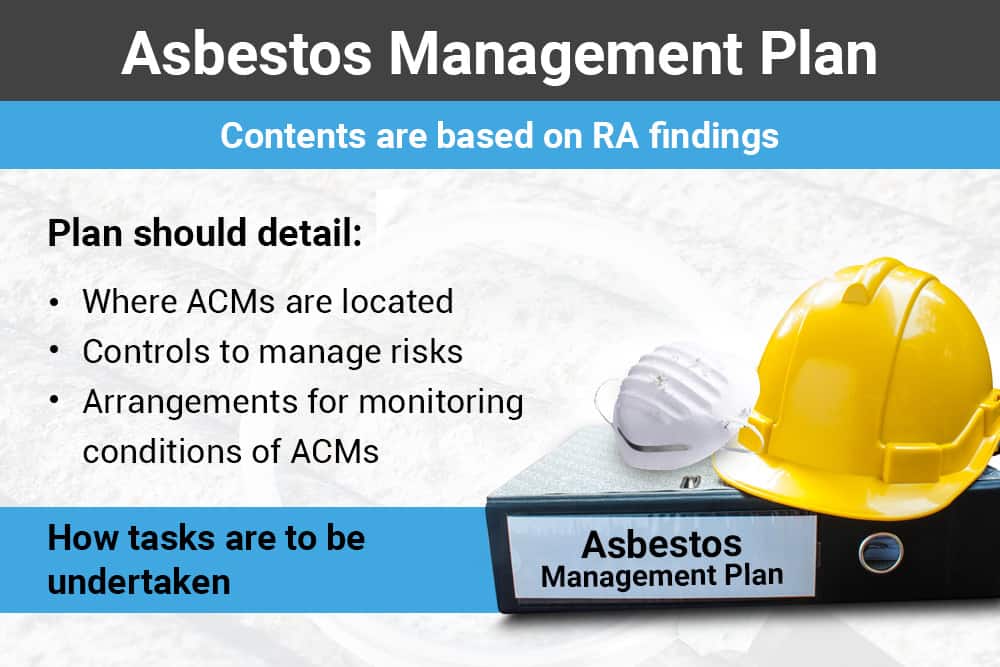
The Control of Asbestos Regulations 2012 stipulate that specific measures must be taken to ensure asbestos safety in buildings that were constructed before the year 2000.
These measures apply to employers, employees and anyone that arrives to work in a particular building. Responsibility for carrying out the asbestos regulations falls to both employers and employees who are designated as duty holders.
However, it is not always an easy process to ascertain who should act as a duty holder. Often, a person may be inadvertently neglecting their duties as they do not realise they are a designated duty holder. Duty holders can be managers, maintenance staff or even a local authority, according to the Health and Safety Executive (HSE).
To ensure compliance with the law, it is beneficial to ensure that all staff members know if the Control of Asbestos Regulations 2012 applies to their situation. What are the current asbestos regulations? Who can be designated as a duty holder? And what are the responsibilities of duty holders? In this article, we will look at the answers to these questions.
Who Can be Appointed as a Duty Holder?
According to the current asbestos regulations, a duty holder is any person who is responsible for maintaining or managing a non-domestic building, for example, a managing agent. Non-domestic premises include all workplaces, as well as common areas in communal flats, such as hallways and reception areas. A duty holder can also be a person who is in charge of a building, such as a landlord, or property owner.
The Roles of Duty Holders According to the Control of Asbestos Regulations
Regulation 4 of the Control of Asbestos Regulations 2012 sets out a framework for managing asbestos and outlines the role of the ‘duty holder’. It defines this person as someone who is in charge of non-domestic premises. It explains their responsibilities and what they must do in order to control the risks from asbestos.
If a non-domestic building was built before 2000, the duty holder must identify, locate and manage asbestos in it. To this end, a duty holder must ensure that an asbestos register is kept on the premises and that it is regularly updated. The register must be made available to any person that works in the building.
Duty holders are held responsible in the event that anyone who works or arrives to work in the building is exposed to ACMs. To mitigate or eliminate this risk, a duty holder must ensure that any potential ACMs are managed safely using an asbestos management plan.
An asbestos management plan is a plan that includes the asbestos register and all the details of how you have arranged to control asbestos risk and who is responsible. This plan must be regularly updated if there are material changes in the building. A plan helps to ensure that all ACMs are inspected on an annual basis.

The duty holder is responsible for providing a copy of the written plan to anyone who might disturb ACMs on their premises.
Where a duty holder has responsibility for a large building or a range of buildings, they must recruit an appointed person or persons who will help them to fulfil their legal duties.
An appointed person must have the skills and authority to ensure that all asbestos-containing materials (ACMs) are managed effectively. The duty holder must establish clear lines of responsibility for asbestos management and for the implementation of their ACM plan.
Asbestos Identification Under the Control of Asbestos Regulations
Regulation 5 of the control of asbestos regulations 2012 requires the identification of the presence of asbestos and states that an employer must not undertake demolition, maintenance or any other work which might expose employees to asbestos, unless they have completed a suitable and sufficient risk assessment.
The only way to know for sure if asbestos is present is to send a sample to a laboratory and have it analysed under a microscope. If there is any doubt as to whether asbestos is present, then an employer must proceed on the assumption that there are ACMs present in the building.
Asbestos Risk Assessments
Regulation 6 of the control of asbestos regulations provides further details about asbestos risk assessments.
Asbestos risk assessments must include the nature and degree of exposure which may occur during the course of the work. They need to consider the effects of control measures which have been, or will be taken, and consider the results of monitoring of exposure.
An asbestos risk assessment must detail the steps that are taken to prevent exposure to ACMs and reduce the risk of exposure to the lowest level reasonably practicable. It must consider the results of any medical surveillance that is relevant and include any additional information that may be needed in order to complete the risk assessment.
Only those that are suitably competent can complete an asbestos risk assessment.
Information, Instruction and Training
Regulation 10 of the control of asbestos regulations 2012 covers information, instruction and training. It states that employers must provide these to a sufficient level to anybody that may disturb asbestos during work and anybody who supervises such employees.
All employers have the responsibility to provide training for staff who may come into contact with ACMs. This training must include information on:
- The properties of asbestos
- The effects on health from asbestos
- The type and location of ACMs
- How work tasks can disturb ACMs
- How to work safely and control risk
- Risk assessments
- Air monitoring
- Hygiene requirements
- How to deal with emergencies
- Decontamination procedures
- Disposing of asbestos waste
- Medical examinations
Accessing Suitable Asbestos Training
To provide their employees with suitable asbestos training, many employers opt to use the services of an online health and safety training provider. Online training is most often cheaper than classroom-based learning and can be taken in segments to fit around work schedules.
Human Focus is a leading provider of health and safety training courses. The Human Focus Asbestos Awareness Training Courses provide participants with an in-depth knowledge of the current asbestos regulations and how to apply them in the workplace. They also offer a free infographic and a poster to ensure safety awareness when exposed to asbestos.
Trainees that participate in a Human Focus Asbestos Awareness Training Course will learn the risks associated with asbestos and what safety measures to take if an exposure occurs. The courses are accredited by reputable authorities such as the UK Asbestos Training Association (UKATA) and Independent Asbestos Training Providers (IATP).






















































































































































































































































































































































































































































































































































